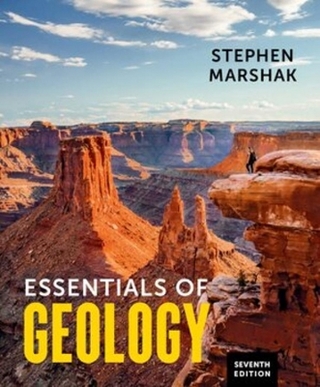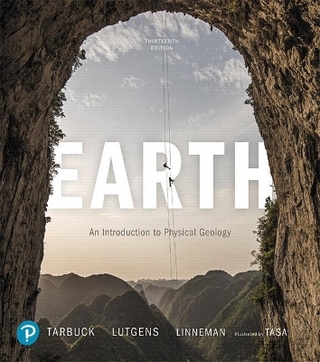
The Continental Drift Controversy 4 Volume Paperback Set
Cambridge University Press
978-1-316-61651-2 (ISBN)
- Keine Verlagsinformationen verfügbar
- Artikel merken
Resolution of the sixty-year debate over continental drift, culminating in the triumph of plate tectonics, changed the very fabric of Earth science. This four-volume treatise on the continental drift controversy is the first complete history of the origin, debate and gradual acceptance of this revolutionary theory. Based on extensive interviews, archival papers and original works, Frankel weaves together the lives and work of the scientists involved, producing an accessible narrative for scientists and non-scientists alike. Volume 1 covers the early 1900s when Wegener first proposed that the continents had once been a single landmass. Volume 2 describes the growing paleomagnetic case for continental drift in the 1950s and development of Apparent Polar Wander Paths. Volume 3 describes the expansion of the land-based paleomagnetic case for drifting continents, and Volume 4 recounts the discovery of geomagnetic reversals leading to the rapid acceptance of seafloor spreading and the birth of plate tectonics.
Henry Frankel was awarded a PhD from Ohio State University in 1974 and then took a position at the University of Missouri – Kansas City where he became Professor of Philosophy and Chair of the Philosophy Department (1999–2004). His interest in the continental drift controversy and the plate tectonics revolution began while teaching a course on conceptual issues in science during the late 1970s. The controversy provided him with an example of a recent and major scientific revolution to test philosophical accounts of scientific growth and change. Over the next thirty years, and with the support of the United States National Science Foundation, the National Endowment for the Humanities and the American Philosophical Society, Professor Frankel's research went on to yield new and fascinating insights into the evolution of the most important theory in the Earth sciences.
Volume 1: 1. How the mobilism debate was structured; 2. Wegener and Taylor develop their theories of continental drift; 3. Sub-controversies in the drift debate, 1920s–1950s; 4. The mechanism sub-controversy: 1921–1951; 5. Arthur Holmes and his Theory of Substratum Convection, 1915–1955; 6. Regionalism and the reception of mobilism: South Africa, India and South America from the 1920s through the early 1950s; 7. Regional reception of mobilism in North America: 1920s through the 1950s; 8. Reception and development of mobilism in Europe: 1920s through the 1950s; 9. Fixism's popularity in Australia: 1920s to mid 1960s; References; Index. Volume 2: Introduction; 1. Geomagnetism and paleomagnetism: 1946–1952; 2. British paleomagnetists begin shifting their research toward testing mobilism: summer 1951 to fall 1953; 3. Launching the global paleomagnetic test of continental drift: 1954–1956; 4. Runcorn shifts to mobilism: 1955–1956; 5. Enlargement and refinement of the paleomagnetic support for mobilism: 1956 through 1960; 6. Earth expansion enters the mobilist controversy; 7. Development and criticism of the paleomagnetic case for mobilism: late 1950s and early 1960s; 8. Major reaction against the paleomagnetic case for mobilism and early work on the radiometric reversal time scale: 1958–1962; References; Index. Volume 3: Introduction; 1. Extension and reception of paleomagnetic/paleoclimatic support for mobilism, 1960 to 1966; 2. Reception of the paleomagnetic case for mobilism by several notables, 1957 to 1965; 3. Seafloor spreading, the first version: Harry Hess develops seafloor spreading; 4. Another version of seafloor spreading: Robert Dietz; 5. The Pacific as seen from Scripps Institution of Oceanography: Menard's changing views about the origin and evolution of the ocean floor; 6. Fixism and Earth expansion at Lamont Geological Observatory; References; Index. Volume 4: Introduction; 1. Reception of competing views of seafloor evolution, 1961–1962; 2. Explaining the origin of marine magnetic anomalies, 1958–1963; 3. Continuing disagreements over continental drift, the evolution of ocean floors, and mantle convection, 1963–1964; 4. Further work on the Vine–Matthews hypothesis and development of the idea of transform faults, 1964–1965; 5. Resolution of the continental drift controversy; 6. Plate tectonics introduced; References; Index.
| Zusatzinfo | 198 Halftones, unspecified; 29 Line drawings, unspecified |
|---|---|
| Verlagsort | Cambridge |
| Sprache | englisch |
| Maße | 170 x 250 mm |
| Gewicht | 3000 g |
| Themenwelt | Naturwissenschaften ► Geowissenschaften ► Geologie |
| ISBN-10 | 1-316-61651-7 / 1316616517 |
| ISBN-13 | 978-1-316-61651-2 / 9781316616512 |
| Zustand | Neuware |
| Haben Sie eine Frage zum Produkt? |
aus dem Bereich


